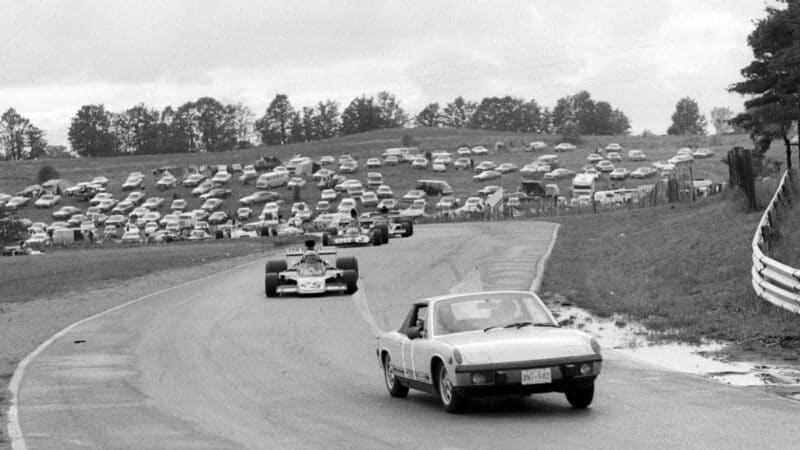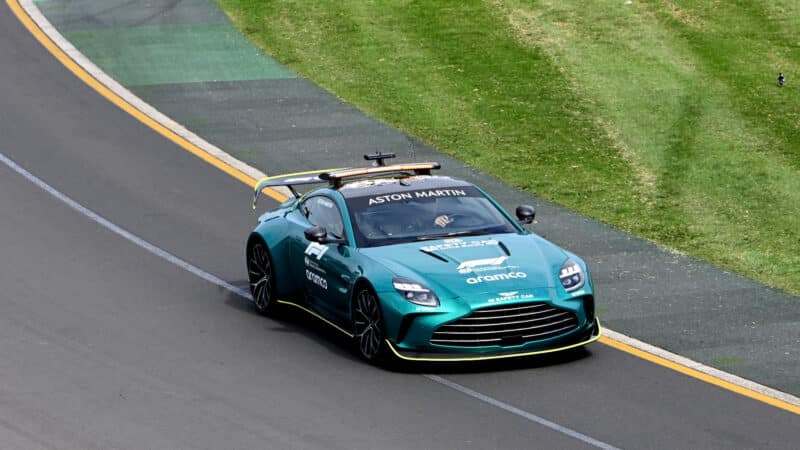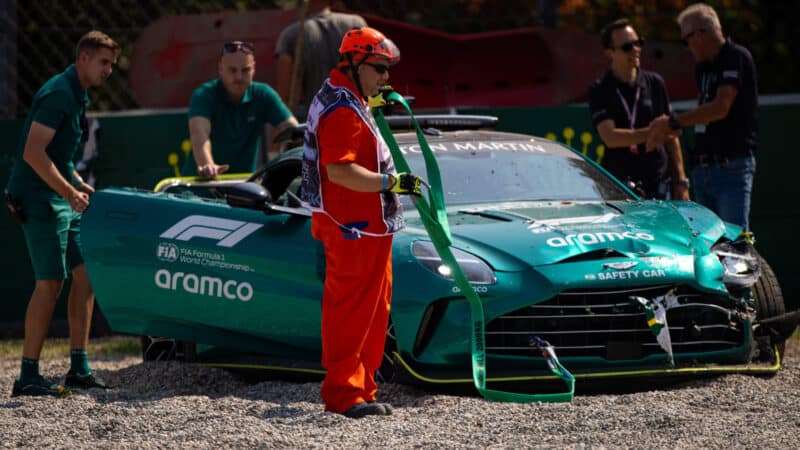Everything you need to know about the F1 safety car

The safety car is a common sight these days
Getty Images
Formula 1 is often celebrated for its speed and cutting-edge technology, but behind all the action is a carefully orchestrated system designed to ensure the safety of drivers, marshals, and fans alike.
One of the most important components of this system is the safety car.
While it may not get as much attention as the racing machines, the safety car plays a crucial role in controlling the pace in dangerous conditions, and there are plenty of fascinating facts and stories behind it.
Below, we dive into everything you’ve ever wanted to know about the F1 safety car and explore its role in keeping F1 running safely.
What is the F1 safety car?
The Formula 1 safety car is a specially prepared high-performance vehicle used to limit the speed of F1 cars on track during emergencies, crashes, or hazardous conditions.
The field bunches up behind the safety car and overtaking is banned. This allows marshals to work safely on the track — typically removing debris or attending to damaged cars — while drivers remain in the same order and ready to resume racing.
The safety car is also often used at the start of races when the track conditions are considered too dangerous to go racing, usually when it’s too wet and visibility becomes a problem.
If repairs or recovery look like they require an extended period of time, or conditions are too dangerous, the race director will usually order red flags to be waved, halting the race. Cars then return to the pits until competition can resume.
What is the Virtual Safety Car?
In addition to sending a physical car out on track, F1 race directors can also instigate a Virtual Safety Car period, triggering trackside electronic boards display the initials VSC.
Drivers must then drastically reduce their speed; their dashboard display lets them know whether they are within the limit. This is typically used for less severe incidents, as it largely maintains the gaps between cars, causing less disruption to the race. However, as the cars are not normally bunched up, this means that marshals rarely have long stretches where the track is clear of any moving racing cars.
When was the safety car introduced in F1?

The first safety car in the 1973 Canadian GP
Getty Images
The first use of a safety car in F1 occurred at the 1973 Canadian Grand Prix. With treacherous weather causing several on-track incidents, race officials deployed a lemon-yellow Porsche 914, driven by Canadian racer Eppie Wietzes.
This deployment was far from straightforward, however, as the safety car mistakenly positioned itself in front of the wrong competitor, which led to confusion about the running order and made it difficult to determine the rightful winner.
It took several hours after the race to officially confirm Peter Revson as the winner.
Despite the mix-up, the experiment marked the beginning of the safety car’s role in race safety – though formal rules and regular use would follow later, especially from 1993 onward.
How does the safety car work?

Aston Martin joined Mercedes as a safety car supplier in 2021
Aston Martin
When a significant on-track incident occurs, race control deploys the safety car, which enters the circuit at a designated point.
F1 drivers are shown yellow flags and illuminated ‘SC’ signals; overtaking is forbidden.
The safety car leads the cars in a single-file queue at a controlled pace, allowing marshals to work in safety.
When the incident is cleared, the safety car pulls into the pits, and the field resumes racing at full speed after a green signal.
Who drives the safety car?
Since 2000, the primary safety car driver has been Bernd Mayländer, a former professional German racer.
He is accompanied by a co-driver who manages communications and operations. They remain on standby throughout the race to respond instantly to any incident.
What cars are used as the safety car?

The Mercedes safety car
Getty Images
From the 2021 season, two cars share safety duties: the Mercedes-AMG GT Black Series and the Aston Martin Vantage S F1 Edition.
The cars are equipped with FIA-specific electronic systems, additional screens, rear-view cameras, and specialised controls for race management.
Click here to read a detailed comparison between the two safety car models.
How fast is the safety car?
While both the Mercedes and the Aston Martin can reach top speeds of 202mph (325km/h), their actual pace during a race depends on conditions.
Given its significantly lower speed potential compared to an F1 car, the safety car driver usually needs to push hard to make sure it’s not too slow for the cars following.
It’s not uncommon for F1 drivers to complain that the safety car is running too slowly for them.
Has the safety car ever crashed?

Mayländer crashed before the 2024 Italian GP
Getty Images
While there are no recorded safety car accidents in race conditions, Mayländer lost control of the Aston Martin Vantage at the Parabolica during the 2024 Italian GP weekend during a pre-race high-speed systems check at Monza.
The car ended up in the barriers, but both Mayländer and his passenger were unharmed.
The accident did not impact the race, as a backup was available.
Has the safety car ever run out of fuel?
There are no confirmed cases of the F1 safety car running out of fuel during a race.
However, Mayländer has admitted coming close in rare, exceptionally long deployments like the 2007 Japanese GP, when the first 19 laps of the race took place under SC conditions because of poor weather.
The ruinous fuel consumption that comes from pushing a road-based car hard on the track is a known issue for all racing series. During the 2023 Laguna Seca IndyCar race, however, the high number of caution laps meant the Honda Civic Type R pace car needed to dive into the pits to be refuelled to ensure it could complete its duties for the rest of the race.
How much does the safety car cost?

The safety cars are not cheap
Aston Martin
The road-going version of the Aston Martin Vantage S F1 Edition currently in use as the safety car has a base price estimated at £142,000.
The Mercedes has an estimated base price of around £240,000 depending on specifications.
These figures represent the retail cost, but the actual F1 safety car is further modified for track use with special equipment such as FIA radio systems, light bars, emergency gear, and performance enhancements, which increases the final cost over the standard retail price significantly.
